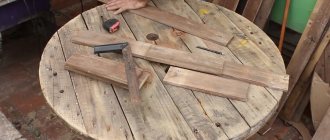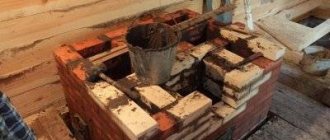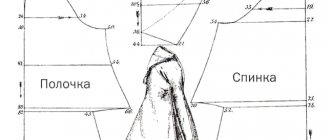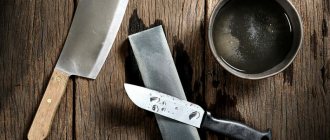Gypsum brick for interior decoration has become one of the most popular ways to decorate room surfaces. It has replaced options that are considered more traditional: wallpapering, painting. The fact is that this decorative material includes an excellent aesthetic component, as well as the availability of a product that you can make yourself.
Advantages and disadvantages
Decorative gypsum bricks have many advantages, which are as follows:
- Creating a good indoor microclimate. Possessing hygroscopicity, the material is able to take away some of the moisture from the air, which it releases when there is a lack of it.
- Fire resistance. Gypsum is not subject to combustion, which means it is not a source of flame propagation.
- Additional thermal and sound protection of the object. The product creates a coating that retains heat inside the room and also prevents the penetration of noise pollution.
- Light weight. The design does not exert significant load on the surface. Therefore, such bricks are excellent for finishing partitions.
- Large selection of colors and relief. This makes it possible to show a full flight of fantasy and design imagination.
- Easy to install. To work you will need a minimum set of tools and skills.
- Possibility of self-production. This significantly reduces the overall costs of finishing activities.
One of the main advantages of gypsum brick is its ease of installation
. Of course, there are some disadvantages. The negative points include low resistance to mechanical damage. That is, it is quite easy to damage the material. But with some skill, it is possible to restore the coating.
Where can the material be used?
Currently, there are various types of products on the market. They differ in their external properties. There are the following types of decorative tiles:
- Glossy. It is obtained by applying a layer of varnish.
- Matte. The treatment is carried out with special impregnations that increase the protective properties of the material.
- Embossed. The drawing is completely individual.
- Convex and concave.
Gypsum brick can vary in color, relief, texture and shape
The number of existing shades is very large. If necessary, additional painting of the product can be carried out.
The material is suitable for use in various rooms, but exclusively inside a house or apartment. It is also necessary to take into account that its use is unacceptable in the following places:
- in the bathroom or shower;
- next to the kitchen sink and gas stove;
- for facing fireplaces.
The coating looks quite impressive when combined with other types of finishing products.
Gypsum brick can only be used for finishing dry rooms
Drying
Our future blocks should be in the forms for several hours. This time will be enough for them to become better formed. To avoid wasting time, prepare racks for drying.
The place where the bricks will dry should be:
- ventilated,
- protected from direct sunlight (for this purpose, you can attach a canopy to the rack itself),
- dry If drying will take place not indoors, but outdoors, then care should be taken in advance to protect it from possible precipitation. To do this, it is advisable to stock up on waterproof film. A sudden rainfall can ruin all efforts to make bricks if they are not protected from moisture.
Instead of a rack, you can simply use a piece of land, but the protection requirements will be the same. In addition, a two-centimeter layer of dry material, such as straw or sand, should be poured onto the surface of the soil.
This is necessary so that the moisture contained in the ground does not penetrate the drying bricks. In addition, straw and sand will prevent the material from sticking to the ground, and the blocks can be easily moved if necessary.
So, several hours have passed, the racks or ground surface are prepared. Now we take the blanks to the drying place, remove the lid, turn the molds upside down, thereby dumping the bricks onto the shelves. In this form they should lie for 7 to 10 days.
During drying, about 85% of the water will leave the blocks. Actually, the end of the process can be determined by the absence of moisture on the surface. The resulting material is called raw brick. In general, it can already be used in construction. But only for interior work.
Adobe cannot be used for cladding and construction of external walls, since it has a very low level of water resistance. Only a special procedure - firing - can solve this problem.
Self-production
Decorative bricks are made by hand without the use of special technologies and units. For such a process you will need a simple set of components:
- Gypsum mixed until liquid.
- A hardener that reduces the setting time of the solution and also increases its performance properties.
- A color that is added directly to the mixture.
- Form - can be plastic or silicone.
On a note! It is the form that is quite expensive, so many people try to make it from improvised means. The process takes two to three weeks. For this, a brick is used, which will act as a sample. It is placed in a manufactured wooden frame of the required size. All parts are coated with lubricant. The structure is filled with liquid silicone. It turns out to be a household version, which is not much different from the store version.
Mold for making gypsum bricks
But how to make decorative brick at home? The event consists of following certain steps:
- The necessary tools are being prepared. To work, you will need a container (construction bucket), a drill with a mixer attachment. Pre-prepared molds and lubricant for them. It is the last ingredient that helps to remove the product with minimal difficulty. You can purchase a special substance or use simple Vaseline or soap solution.
- You should mix enough mixture to fill all the molds. It should be borne in mind that excess will quickly harden and become unusable.
- The solution is mixed as it is done during normal work. The dry mixture is poured into a pre-prepared container with water. Everything is thoroughly mixed. You need to get the consistency of sour cream. It is important to consider that the presence of lumps and dry sediment is unacceptable. Additionally, a hardener is added.
The solution for making gypsum bricks must be of uniform consistency, without lumps
On a note! In the absence of a hardener, many craftsmen who make such bricks themselves recommend using citric acid.
- For an additional effect, PVA is introduced - fifty grams of glue are used per kg of dry mixture. Fiber is added to reinforce the material. Its amount does not exceed 1-2 grams.
- When the solution is ready, pour in the prepared color, the thoroughness of stirring it depends on what effect is desired. For example, to obtain a homogeneous surface, intensive mixing is carried out. And to create stains, the pigment is poured into the resulting substance, but without proper stirring.
- The mold is greased. The composition is poured in one layer, without creating unnecessary gaps. Everything is left for a while.
- After 30-40 minutes, remove the resulting products. This must be done carefully. If plastic molds are used for decorative bricks, they are lightly tapped with a mallet. Silicone products are simply bent a little.
When removing the finished brick from the mold, be careful not to damage it.
Advice! To show your design imagination, you can paint after finishing the surface. This will allow you to get completely customized coverage. The compositions are chosen to be water-based.
If required, the material is coated with special impregnations. To create a glossy effect, apply several layers of varnish. The resulting material has all the properties of purchased material and is excellent for installation indoors.
Foam bricks
For work you will need: • a base on which the bricks will be glued (you can choose plywood or drywall); • cutting knife; • primer; • PVA glue; • soldering iron to imitate the structure of artificial stone; • aerosol paint (you can use car paint).
1. To imitate bricks, it is better to take polystyrene foam made from polyurethane foam
. having small grains. Products made from it will be more durable and will not crumble when touched.
2. The foam is cut
according to the dimensions of a standard brick – 250×120 mm.
3. Using PVA glue, the bricks are glued
onto a base (plywood or drywall) primed to increase adhesion, which is pre-cut to the required size. To imitate masonry, a gap of 10-15 mm is left between the bricks. If the walls are perfectly smooth, you can glue directly onto a primed wall.
Advice.
To ensure that the spaces between the bricks are the same, you can use blanks 10-15 mm wide and insert them between the rows.
4. To simulate unevenness, cracks and potholes are drawn on the bricks using a soldering iron. Instead of a soldering iron, you can use any sharp object.
Important!
When foam is heated, it becomes toxic, so you should wear a mask when working.
Creating cracks on the wall using a soldering iron or sharp knife
5. The last, final stage of creating a brick wall is painting it. You should paint in several layers, each time using different shades of paint. Its last layer should be lighter.
A wall imitating artificial stone masonry can be painted not only in the usual red, but also in a light beige color
Brickwork in the kitchen interior
We prepare raw materials
So, the plan is ready, it’s time to get down to business. To make bricks we need a lot of clay, since that is what they are made from. First of all, you need to find its deposit. In this case, it is advisable to choose one that is located as close as possible to the place of future production.
In addition, the area being developed must be dry, otherwise the work will be extremely difficult, if not completely impossible. For the job, you will need tools for cutting bushes, crushing, digging and loading. At a minimum, stock up on a crowbar, a shovel and a pitchfork. And don’t forget about the wheelbarrows on which you will transport the material to the production site.
Raw materials are extracted as follows:
- if the field is overgrown with grass, bushes and trees, then all this must be removed. Brush cutters and shovels will help you with this,
- To make it convenient to transport the mined clay, dig a trench along which you can roll a wheelbarrow to the mining site and back. It is advisable to line the bottom of the trench with boards, then the wheels will spin much easier,
- Then you can proceed directly to development. If the clay is loose, great, just dig it out with shovels. If it is quite dense or completely frozen, then you will have to work with a crowbar. Instead, a pickaxe is quite suitable,
- As excavation progresses, the clay is transferred to waiting wheelbarrows. It can stick to shovels. If this factor interferes greatly, then you can replace the shovel with a fork, the teeth of which are often located,
- Roll the loaded wheelbarrow to the storage location and unload it there. You should not throw all the extracted clay into one pile. It is better to make several cone-shaped embankments a meter high, and the diameter of the base of each of them should be about one and a half meters.
I remind you once again that for every thousand bricks you will have to extract two and a half cubic meters of clay. Don't forget to check your preliminary calculations.
It is advisable to add about 7-10% to them in case errors are made during the production of some bricks. After all, no one is immune from receiving defective products. Especially if this is your first time encountering this type of work.
Gypsum tiles imitating brick
Plastic gypsum allows you to imitate the structure of brick down to the smallest detail. Products made from it are almost indistinguishable from natural ones. They can be purchased ready-made or made by yourself.
For work you will need:
• mold for making bricks; • dry gypsum mixture; • water; • tile adhesive; • notched trowel; • damp sponge to remove excess glue.
Brick mold
1. Gypsum powder, water and glue
mix until a creamy mass is formed.
2. The prepared mixture is poured into molds
. It hardens very quickly (about 30 minutes), so you should not use too much solution.
Pouring into molds
Advice.
To ensure that the solution is distributed more evenly, shake the mold slightly after pouring.
3. If the bricks will be glued directly to the wall, it should be prepared: leveled, knocked down protruding parts, filled with glue or plastered over the largest cracks and potholes. It is much easier, just as in the previous case, to glue bricks onto the base
. plywood or drywall.
4. After preparing the surface, it is primed
. With the help of a primer, adhesion increases and the bricks will hold more firmly.
5. Markings are made on the wall with a level. Glue is applied to it using a spatula equipped with teeth, and then the bricks are laid.
Gluing tiles from bricks
6. Water based acrylic dye
You can add it directly to the mortar or paint the bricks after gluing them to the wall. To imitate masonry, the base between the bricks is painted with a darker color.
An example of plaster brick finishing
Making the dough
Bricks are made from clay dough, that is, from a mixture of clay and water. It is not difficult to make, but first you need to test the source material. If you immediately start making blocks, the result can be quite unexpected and not always pleasant.
More specifically, we need to check whether the fat content of the clay is too high. For testing we will need:
- half a kilo of clay
- half a glass of water,
- three days.
Mix the clay with water and knead thoroughly. This should be done in the same way as with regular dough, for example, yeast. Everyone has seen how their mother or grandmother bakes a pie, right? Knead in the same way until all the water is absorbed and the mixture begins to stick to your hands.
Once you’ve finished kneading, great, divide the resulting mass into two parts. Make a ball from the first (diameter 0.6–0.7 cm), and a flat cake from the second (diameter up to 10 cm). Place these wonderful sculptures in some dry place and forget about them for three days.
After this time, carefully examine the result. First of all, pay attention to whether cracks have appeared on the surface of both works. If they exist, then this factor means increased fat content of the source material. In this case, to make bricks you will need to add not only water, but also sand to the clay.
Important: if you need to adjust the composition by adding sand or something else, then after each change, carry out the same test to make sure you get the required quality.
The next test is for strength. Drop a ball from a meter high and see what happens to it. If it cracks or crumbles, that’s bad, you’ll either have to look for another source material or somehow change the fat content of the existing one. If everything is in order with the ball, then the dough has passed the test, and you can proceed directly to production.
Decorative Portland cement brick
To work you will need:
• cardboard; • white Portland cement; • sand; • foam balls (they are sold in any furniture store); • cement-based sealant; • reinforcing mesh.
Styrofoam balls
1. The first step is to make a mold for bricks
. It can be made of ordinary cardboard. A reinforcing mesh of suitable size is placed on its bottom and walls.
2. To make a solution
sand, foam balls and water are mixed in water in a ratio of 1:1:2. Next, Portland cement is poured so that the solution acquires the consistency of very thick sour cream. To increase viscosity, it must stand for 20 minutes.
3. The mass is placed by hand (it is better to wear rubber gloves) into a cardboard box, leveled and left for a day to harden.
4. To make the products smooth, they are coated with a more liquid solution consisting of water, sand and Portland cement (3: 1: 1).
5. Bricks should be painted with acrylic paint diluted with water. First, you should tint them with a darker solution, and then cover them with a transparent layer of lighter paint.
Portland cement bricks can be any color
6. The last step is to seal the paint with liquid sealant.
Burning
For firing you will need a furnace, which you can also make yourself. You can build it in a large barrel. To do this, dig a hole half a meter deep, put material for lighting a fire at its bottom, and install legs 20 centimeters high above it. Place an iron barrel on them.
In this improvised oven, bricks are stacked in several rows. After filling, the structure is covered with a sheet of metal, and a fire is built under it. The firing process lasts approximately 18–20 hours, during which time the fire must be constantly maintained.
After this time is over, we gradually reduce the intensity of the fire, and then completely extinguish it. Under no circumstances should the metal sheet be removed until the barrel and its contents have completely cooled. Otherwise, the bricks will crack.
Cooling should occur slowly, naturally, without sudden temperature changes and without drafts. This is the only way you can get a quality product.
Next, take one of the finished bricks and split it in half. Carefully inspect the fault. It must have the same color and structure. Then immerse these pieces in water and wait for some time. If everything is in order, that is, there is no damage or color distortion, then such bricks can be safely used in construction.
Gypsum plaster “like brick”
For work you will need:
• plaster; • water; • putty knife; • Master OK.
You can also “paint” bricks on gypsum plaster. To do this, the solution should be applied to the wall in small fragments - no more than 0.5 square meters. m.
1. First, a small layer of plaster is applied to the wall. Using a spatula, create unevenness
in the style of Venetian plaster. You can also imitate cracks and potholes on the wall using ordinary crumpled plastic film or a rubber sponge.
Creating unevenness on the wall
Creating cracks using crumpled plastic film
Using a regular sponge you can also imitate unevenness on the wall
2. To imitate masonry, stripes are drawn
. First, horizontal and then vertical lines are drawn.
3. The wall is painted
acrylic paints in two or three layers.
Related video: Do-it-yourself brick imitation
Gypsum brick: use for interior decoration and DIY production
Gypsum brick for interior decoration has become one of the most popular ways to decorate room surfaces. It has replaced options that are considered more traditional: wallpapering, painting. The fact is that this decorative material includes an excellent aesthetic component, as well as the availability of a product that you can make yourself.
Advantages and disadvantages
Decorative gypsum bricks have many advantages, which are as follows:
- Creating a good indoor microclimate. Possessing hygroscopicity, the material is able to take away some of the moisture from the air, which it releases when there is a lack of it.
- Fire resistance. Gypsum is not subject to combustion, which means it is not a source of flame propagation.
- Additional thermal and sound protection of the object. The product creates a coating that retains heat inside the room and also prevents the penetration of noise pollution.
- Light weight. The design does not exert significant load on the surface. Therefore, such bricks are excellent for finishing partitions.
- Large selection of colors and relief. This makes it possible to show a full flight of fantasy and design imagination.
- Easy to install. To work you will need a minimum set of tools and skills.
- Possibility of self-production. This significantly reduces the overall costs of finishing activities.
One of the main advantages of gypsum brick is ease of installation
Of course, there are some disadvantages. The negative points include low resistance to mechanical damage. That is, it is quite easy to damage the material. But with some skill, it is possible to restore the coating.
Where can the material be used?
Currently, there are various types of products on the market. They differ in their external properties. There are the following types of decorative tiles:
- Glossy. It is obtained by applying a layer of varnish.
- Matte. The treatment is carried out with special impregnations that increase the protective properties of the material.
- Embossed. The drawing is completely individual.
- Convex and concave.
Gypsum brick can vary in color, relief, texture and shape
The number of existing shades is very large. If necessary, additional painting of the product can be carried out.
The material is suitable for use in various rooms, but exclusively inside a house or apartment. It is also necessary to take into account that its use is unacceptable in the following places:
- in the bathroom or shower;
- next to the kitchen sink and gas stove;
- for facing fireplaces.
The coating looks quite impressive when combined with other types of finishing products.
Gypsum brick can only be used for finishing dry rooms
Self-production
Decorative bricks are made by hand without the use of special technologies and units. For such a process you will need a simple set of components:
- Gypsum mixed until liquid.
- A hardener that reduces the setting time of the solution and also increases its performance properties.
- A color that is added directly to the mixture.
- Form - can be plastic or silicone.
On a note! It is the form that is quite expensive, so many people try to make it from improvised means. The process takes two to three weeks. For this, a brick is used, which will act as a sample. It is placed in a manufactured wooden frame of the required size. All parts are coated with lubricant. The structure is filled with liquid silicone. It turns out to be a household version, which is not much different from the store version.
Mold for making gypsum bricks
But how to make decorative brick at home? The event consists of following certain steps:
- The necessary tools are being prepared. To work, you will need a container (construction bucket), a drill with a mixer attachment. Pre-prepared molds and lubricant for them. It is the last ingredient that helps to remove the product with minimal difficulty. You can purchase a special substance or use simple Vaseline or soap solution.
- You should mix enough mixture to fill all the molds. It should be borne in mind that excess will quickly harden and become unusable.
- The solution is mixed as it is done during normal work. The dry mixture is poured into a pre-prepared container with water. Everything is thoroughly mixed. You need to get the consistency of sour cream. It is important to consider that the presence of lumps and dry sediment is unacceptable. Additionally, a hardener is added.
The solution for making gypsum bricks must be of uniform consistency, without lumps
On a note! In the absence of a hardener, many craftsmen who make such bricks themselves recommend using citric acid.
- For an additional effect, PVA is introduced - fifty grams of glue are used per kg of dry mixture. Fiber is added to reinforce the material. Its amount does not exceed 1-2 grams.
- When the solution is ready, pour in the prepared color, the thoroughness of stirring it depends on what effect is desired. For example, to obtain a homogeneous surface, intensive mixing is carried out. And to create stains, the pigment is poured into the resulting substance, but without proper stirring.
- The mold is greased. The composition is poured in one layer, without creating unnecessary gaps. Everything is left for a while.
- After 30-40 minutes, remove the resulting products. This must be done carefully. If plastic molds are used for decorative bricks, they are lightly tapped with a mallet. Silicone products are simply bent a little.
When removing the finished brick from the mold, be careful not to damage it.
Advice! To show your design imagination, you can paint after finishing the surface. This will allow you to get completely customized coverage. The compositions are chosen to be water-based.
If required, the material is coated with special impregnations. To create a glossy effect, apply several layers of varnish. The resulting material has all the properties of purchased material and is excellent for installation indoors.
Purchased options
Silicone products
Such matrices are one of the most popular store options. The brick-like silicone mold is elastic, resistant to abrasive wear, easily comes off the material and can be used repeatedly. At the same time, the polyurethane matrix is not used for working with concrete. It is worth paying attention to the characteristics of the product, such as the maximum number of casts and what materials it is intended for. You can also make polyurethane molds yourself. To do this, use a compound and a catalyst, which are introduced into the model for pouring in certain proportions and left to harden for up to a day.
Plastic matrices are made to create decorative artificial stone and tile-bricks used in the decoration of houses inside and outside. For its independent production, cement and gypsum are used. This eliminates the need for a concrete mixer, which significantly reduces work time and makes it cheaper. To manufacture such a matrix, the thermoforming method is used, that is, an ingot is formed under the influence of temperature. This technology allows you to give products all kinds of shapes and reliefs.
The advantage of store-bought tile matrices is time saving. You can also consider many interesting design options, such as the effect of bamboo or tree trunk. You can choose a shape with a completely smooth surface or vice versa. It is also possible to purchase not just a rectangular polyurethane matrix, but a base of an interesting shape.
"Venetian brick"
This matrix for tiles and decorative stone:
- Made of impact-resistant material with a wall thickness of 1.5 mm.
- The set consists of 30 tiles.
- Tile size - 20*6*8 cm.
- The weight of all forms is 1.6 kg.
- You can make 200 fills without losing quality.
Return to contents
Product "Athens"
This alternative for decorative stone has the following characteristics:
- The material is impact-resistant, wall thickness is 1.5 mm.
- Can be used during the manufacture of gypsum products and cement mortars.
- The set consists of 6 molds (4 whole and 2 corner halves).
- Product size: 32*10*1.5 cm.
- You can make 200 fills without losing quality.
Return to contents
Making decorative bricks for interior decoration with your own hands
- Preparation for making decorative bricks Materials and tools
- How to properly prepare a special mixture for sculpting decorative bricks
Quite high demands are placed on modern building and finishing materials these days. Trying to make their home more comfortable and original, people purchase environmentally friendly and safe materials. Decorative bricks, which can often be found in construction stores, are very popular. But prices can be quite high.
Scheme for making decorative bricks.
If you want to decorate the interior of a room with decorative bricks, but you don’t want to shell out large sums for it, then you can make it yourself. The finishing material can be given an original shape.
Why is it convenient to make gypsum stone at home?
1. Convenient molds for casting stone, non-bulky, take up little space.2. No vibration table required.3. Clear and simple painting technology.
4. Low cost of mixtures and substances for producing the material.
In addition to making gypsum stone to decorate their premises, many are engaged in its production for commercial purposes. The costs are low and the payback is quick. Moreover, the product is in great demand in the construction market.
Preparation for making decorative bricks
Return to contents
Materials and tools
The ability to use imitation brickwork when decorating the walls of a room from the inside is the most popular finishing method. When starting to prepare for the creation of finishing materials, you should know how to make decorative bricks for interior decoration with your own hands. Many masters are able to cope perfectly with the task. To create this decor, you should prepare all the basic materials and tools.
The amount of materials needed will depend on the surface area that requires cladding. Since you will need bricks in large quantities, making it will not be so easy. Having calculated the required quantity, provide for the availability of stock. However, the installation process will take quite a long time. Initially prepare the following:
Tools for making bricks.
- Container for mixing Portland cement.
- Sprayer and brush.
- White Portland cement.
- Water.
- Acrylic dye.
- Paint container.
- Styrofoam balls.
- Cement-based liquid sealant.
- White quartz sand.
- Wire mesh.
- Rubber gloves.
Special boxes of different sizes will help give the required shape to the bricks. You can combine bricks of different sizes during the manufacturing process. The mesh, made of wire, is taken in such dimensions that it makes it possible to wrap it entirely around the entire perimeter of the box from the inside.
To create a shape for the base of decorative bricks, you should take cardboard boxes of several sizes. They should have a shape similar to standard sized 24x6 cm bricks. The boxes should not be too deep in depth. A depth of 0.5-3 cm is quite sufficient. Fine wire mesh is used to wrap the boxes, which allows the products not to creep apart during the creation of bricks. The result is a mold that allows you to make several decorative bricks.
Return to contents
How to properly prepare a special mixture for sculpting decorative bricks
Scheme of a homemade brick mold.
When the mold is ready, you need to start creating a special mixture. To apply a fairly thick layer with foam balls, fine sand and white Portland cement in its structure, they are taken in a certain ratio. For example, to create one portion, you should take sand and Portland cement in the ratio: 3:1. After this, water is added in small parts to obtain a mixture that has the consistency of thick sour cream.
The sequence of actions should be reduced to the following main points:
- Take a container for the solution.
- Pour water into the reservoir.
- Add polystyrene foam balls (2 to 1) to the water.
- The composition is mixed.
- Sand is poured there in equal parts with Portland cement.
- Mix thoroughly after each addition of the next component.
The result should be a mixture that you can sculpt with your own hands to make decorative bricks. The drying mixture can be given different shapes by using carving tools (chases, chisels, etc.).
It should be borne in mind that if the mixture dries for a long time, the product will be difficult to cut to the required shape. The mixture should sit and dry a little. When the composition becomes viscous, you can begin to sculpt bricks. It is advisable to apply the mixture completely before 20 hours have passed. If this is not done, the composition will lose its plasticity and become unsuitable for modeling.
Return to contents
Design of a batch furnace, features of laying walls and fireboxes
The site for the furnace is selected, if possible, in an elevated place, inaccessible to sedimentary and groundwater. It is cleared of the plant layer, then horizontally leveled and compacted. The smallest furnace has a capacity of 1500 pcs. finished products. Its width is 1.6 m, length – 2 m, installation height is from 160 to 185 cm. The walls of the furnace are built from raw brick one brick thick.
The ceiling is built on a metal frame if each row of vault bricks rests on two steel strips or rods, which are mounted by welding, forming a frame. Above the laying of bricks, the vault in the middle must have a height of at least 35 cm. The firebox or hearth is a through corridor 50 cm wide and 40 cm high. Along its entire length, ledges are made at a height of 25 cm on both walls. The grates are then placed there using coal fuel.
When using firewood as fuel, grates need not be installed. The firebox is also equipped with a small square door 40x40 cm. The vault is equipped with smoke channels with a cross-section of 25x28 cm. For low-calorie fuel (peat, brown coal), holes of 25x15 cm are provided with lids for supplying fuel. The brick chimney is erected up to 5 m in height with an internal cross-section of 40x40 cm.
It is installed near the stove, behind it, connecting to the smoke duct. It is located in the back wall. Holes for viewing are left in the middle of the wall; they are subsequently filled with bricks and covered with clay. For laying the side and rear walls, arch, pipe, and corners of the front wall, traditional clay-sand mortar is used. Without mortar, a part of the front wall is laid, which will be disassembled for cutting the cage.











